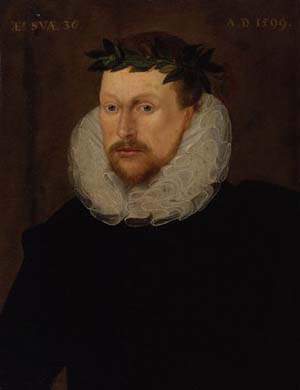Glastonbury
Michael Drayton
O three times famous isle, where is that place that might
Be with thyself compared for glory and delight,
Whilst Glastonbury stood? exalted to that pride,
Whose monastery seemed all other to deride:
O, who thy ruin sees, whom wonder doth not fill
With their great fathers' pomp, devotion, and their skill?
Thou more than mortal power (this judgment rightly weighed),
Then present to assist, at that foundation laid;
On whom for this sad waste should justice lay the crime?
Is there a power in fate, or doth it yield to time?
Or was there error such, that thou couldst not protect
Those buildings which thy hand did with their zeal erect?
To whom didst thou commit that monument to keep,
That suffered with the dead their memory to sleep,
When not great Arthur's tomb nor holy Joseph's grave
From sacrilege had power their sacred bones to save?
He who that God in man to his sepulchre brought,
Or he which for the faith twelve famous battles fought.
What! did so many kings do honour to that place,
For avarice at last so vilely to deface?
For reverence to that seat which had ascribed been,
Trees yet in winter bloom, and bear their summer's green.
Glastonbury has been a place of worship since pre-Christian times and there was a community of Christian monks there by the early Saxon period. A church was built there in 712 AD and by the Norman conquest, Glastonbury Abbey was the richest monastic institution in the country. It was destroyed by fire in the 12th century and immediately rebuilt.
Glastonbury had long been associated with the legend of King Arthur. It is said to be the site of the holy isle of Avalon. While the abbey was being rebuilt, its popularity was given a massive boost by the fortuitous "discovery" of the grave of King Arthur and Queen Guinevere.
When the monasteries were dissolved under Henry VIII, Glastonbury Abbey was the wealthiest abbey in the country after Westminster. The Abbot resisted and was hanged, drawn and quartered on Glastonbury Tor in 1539.
The monastery ruins are now owned by the Church of England and are a popular tourist destination.
